-
 Bitcoin
Bitcoin $107,631.9817
-1.73% -
 Ethereum
Ethereum $2,739.1787
-4.61% -
 Tether USDt
Tether USDt $1.0000
-0.01% -
 XRP
XRP $2.2427
-3.30% -
 BNB
BNB $664.0527
-0.73% -
 Solana
Solana $158.0902
-5.38% -
 USDC
USDC $0.9998
-0.01% -
 Dogecoin
Dogecoin $0.1876
-7.78% -
 TRON
TRON $0.2753
-3.21% -
 Cardano
Cardano $0.6820
-5.55% -
 Hyperliquid
Hyperliquid $43.0171
-0.38% -
 Sui
Sui $3.3308
-4.87% -
 Chainlink
Chainlink $14.3431
-7.89% -
 Avalanche
Avalanche $21.0266
-6.48% -
 Bitcoin Cash
Bitcoin Cash $437.7657
-1.56% -
 Stellar
Stellar $0.2746
-2.52% -
 UNUS SED LEO
UNUS SED LEO $8.8665
-1.96% -
 Toncoin
Toncoin $3.1885
-3.37% -
 Shiba Inu
Shiba Inu $0.0...01260
-6.84% -
 Hedera
Hedera $0.1686
-4.93% -
 Litecoin
Litecoin $88.8406
-5.16% -
 Polkadot
Polkadot $4.0542
-6.28% -
 Monero
Monero $322.5806
-4.20% -
 Ethena USDe
Ethena USDe $1.0004
-0.02% -
 Bitget Token
Bitget Token $4.7089
-3.10% -
 Dai
Dai $0.9998
-0.01% -
 Pepe
Pepe $0.0...01206
-9.06% -
 Uniswap
Uniswap $7.8694
-5.20% -
 Pi
Pi $0.6232
-2.68% -
 Aave
Aave $301.3815
-3.83%
How to interpret the small positive line filling after the gap? Is the gap support effective?
The small positive line after a gap in crypto charts can signal bullish trends or market uncertainty, with gap support effectiveness varying by liquidity and sentiment.
Jun 10, 2025 at 04:00 pm
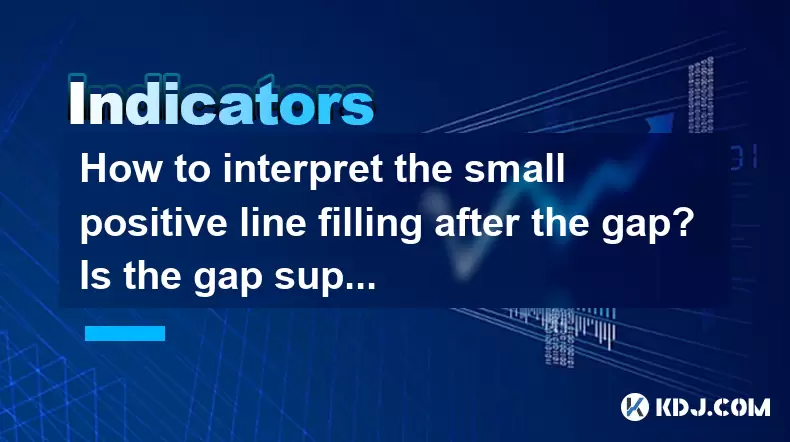
How to Interpret the Small Positive Line Filling After the Gap? Is the Gap Support Effective?
Understanding the behavior of cryptocurrency price charts is crucial for traders and investors looking to make informed decisions. One particular phenomenon that often sparks curiosity and confusion is the small positive line filling after a gap in the price chart. This article will delve into the interpretation of this occurrence and assess the effectiveness of gap support in the context of cryptocurrency trading.
What is a Gap in Cryptocurrency Price Charts?
A gap in a cryptocurrency price chart occurs when there is a significant price movement between two consecutive trading periods, with no trading activity in between. This can happen due to various reasons such as major news events, significant shifts in market sentiment, or the opening and closing of trading sessions. Gaps are visually represented as blank spaces on the chart, separating the price levels of the two periods.
The Small Positive Line Filling After the Gap
After a gap appears on the chart, it is common to observe a small positive line that starts to fill the gap. This line represents a slight upward movement in the price, attempting to bridge the gap between the previous and current price levels. The small positive line is often seen as an initial attempt by the market to correct the gap and bring the price back to a more stable level.
Interpreting the Small Positive Line
The presence of a small positive line after a gap can be interpreted in several ways, depending on the broader market context and the specific cryptocurrency in question. Here are some key interpretations:
- Bullish Signal: If the small positive line continues to grow and eventually fills the gap entirely, it can be seen as a bullish signal. This suggests that the market sentiment is shifting towards optimism, and buyers are stepping in to push the price higher.
- Temporary Correction: Sometimes, the small positive line may only partially fill the gap before the price resumes its downward trend. In this case, it is considered a temporary correction, indicating that the bearish sentiment is still dominant.
- Market Uncertainty: If the small positive line oscillates around the gap without making significant progress, it may reflect market uncertainty. Traders are unsure about the direction of the price, leading to indecision and volatility.
Is the Gap Support Effective?
The effectiveness of gap support in cryptocurrency trading is a topic of much debate. Gap support refers to the price level at the bottom of the gap, which some traders believe acts as a support level that the price will not easily fall below. Here are some factors to consider when evaluating the effectiveness of gap support:
- Historical Data: Analyzing historical data can provide insights into whether a particular cryptocurrency tends to respect gap support levels. If past instances show that the price often rebounds from gap support, it may be considered effective.
- Volume and Liquidity: The volume of trading and the liquidity of the cryptocurrency can impact the effectiveness of gap support. High volume and liquidity can make it more likely for the price to hold at the gap support level.
- Market Sentiment: The overall market sentiment plays a crucial role in determining the effectiveness of gap support. In a bullish market, gap support is more likely to hold, while in a bearish market, it may be breached more easily.
Trading Strategies Based on Gap and Small Positive Line
Traders can develop various strategies based on the interpretation of the small positive line and the effectiveness of gap support. Here are some common strategies:
- Gap Filling Strategy: This strategy involves entering a long position when the small positive line starts to fill the gap, anticipating that the price will continue to rise. Traders may set a stop-loss just below the gap support level to manage risk.
- Gap Reversal Strategy: If the small positive line fails to fill the gap and the price starts to move downward, traders might consider a short position, expecting a gap reversal. A stop-loss can be placed just above the highest point of the small positive line.
- Range Trading Strategy: In cases of market uncertainty, traders might opt for a range trading strategy, buying at the gap support level and selling at resistance levels. This approach requires careful monitoring of the price action and adjustments based on market conditions.
Technical Indicators to Complement Gap Analysis
While the small positive line and gap support are important aspects of price analysis, they should be used in conjunction with other technical indicators to form a more comprehensive trading strategy. Some useful indicators include:
- Moving Averages: These can help identify the overall trend and provide additional confirmation for entry and exit points.
- Relative Strength Index (RSI): The RSI can indicate whether a cryptocurrency is overbought or oversold, helping traders gauge the strength of the current price movement.
- Bollinger Bands: These bands can highlight periods of high volatility and potential price reversals, complementing the analysis of gaps and small positive lines.
Practical Example of Gap and Small Positive Line Analysis
To illustrate how to interpret the small positive line filling after a gap and assess the effectiveness of gap support, let's consider a hypothetical example involving Bitcoin (BTC).
- Scenario: Bitcoin experiences a significant drop overnight, creating a gap on the daily chart. The next trading session opens with a small positive line that starts to fill the gap.
- Analysis: Traders observe that the small positive line is growing steadily, suggesting a potential bullish signal. They check historical data and find that Bitcoin has respected gap support levels in the past.
- Strategy: Based on this analysis, traders decide to enter a long position as the small positive line continues to fill the gap. They set a stop-loss just below the gap support level to manage risk.
- Outcome: The small positive line successfully fills the gap, and the price continues to rise, validating the bullish signal and the effectiveness of the gap support.
Frequently Asked Questions
1. Can the small positive line after a gap be a false signal?
Yes, the small positive line can sometimes be a false signal, especially in highly volatile markets. Traders should use additional technical indicators and consider the overall market context to validate the signal before making trading decisions.
2. How can I identify the gap support level on a cryptocurrency chart?
To identify the gap support level, look for the lowest price point at the bottom of the gap. This level can be marked on the chart using horizontal lines or other technical tools provided by trading platforms.
3. Are gaps more common in certain cryptocurrencies?
Gaps can occur in any cryptocurrency, but they are more common in less liquid markets or during significant news events. Highly liquid cryptocurrencies like Bitcoin and Ethereum may experience gaps less frequently due to continuous trading activity.
4. How does the time frame of the chart affect the interpretation of gaps and small positive lines?
The time frame of the chart can significantly impact the interpretation of gaps and small positive lines. On shorter time frames, such as hourly charts, gaps may be more common and less significant, while on longer time frames, such as daily or weekly charts, gaps can indicate more substantial market shifts.
Disclaimer:info@kdj.com
The information provided is not trading advice. kdj.com does not assume any responsibility for any investments made based on the information provided in this article. Cryptocurrencies are highly volatile and it is highly recommended that you invest with caution after thorough research!
If you believe that the content used on this website infringes your copyright, please contact us immediately (info@kdj.com) and we will delete it promptly.
- The Bitcoin Treasury Strategy That's Reanimating Zombie Companies
- 2025-06-13 03:00:12
- BlockDAG (BDAG) Could Be the Next Biggest Altcoin as NBA Courtside Exposure Teases a Possible 2x Rally
- 2025-06-13 03:00:12
- Tether (USDT) Buys 32% Stake in Canada's Public Gold Royalty Firm Elemental Altus Royalties
- 2025-06-13 02:55:12
- Troller Cat Surges Past $225K in Presale as Dogwifhat Dips and FLOKI Gains
- 2025-06-13 02:55:12
- The graph (GRT), a key player in blockchain data indexing, has not seen a price pump yet.
- 2025-06-13 02:50:13
- Is This the Season Where Meme Coins Rewrite Crypto History Again?
- 2025-06-13 02:50:13
Related knowledge
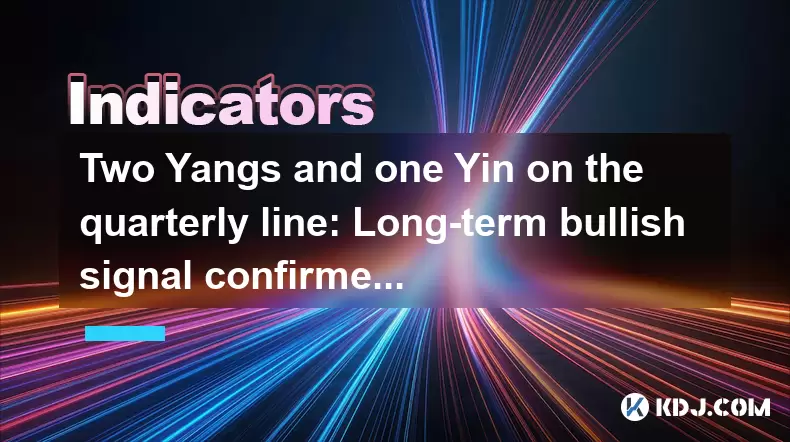
Two Yangs and one Yin on the quarterly line: Long-term bullish signal confirmed?
Jun 12,2025 at 07:00am
Understanding the 'Two Yangs and One Yin' Candlestick PatternIn technical analysis, candlestick patterns play a pivotal role in identifying potential market reversals or continuations. The 'Two Yangs and One Yin' pattern is one such formation that traders often observe on longer timeframes like the quarterly chart. This pattern consists of two bullish (...
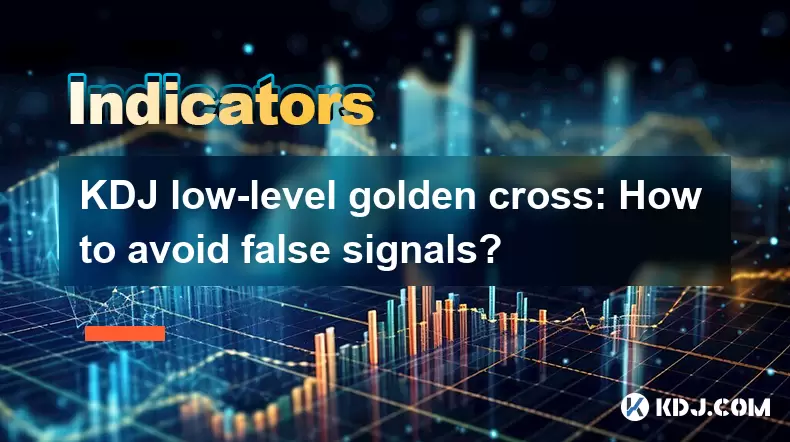
KDJ low-level golden cross: How to avoid false signals?
Jun 12,2025 at 08:21am
Understanding the KDJ IndicatorThe KDJ indicator, also known as the stochastic oscillator, is a momentum-based technical analysis tool widely used in cryptocurrency trading. It consists of three lines: the %K line (fast stochastic), the %D line (slow stochastic), and the %J line (divergence value). These lines oscillate between 0 and 100, helping trader...

Bottom-up volume stagnation: Is it accumulation or heavy selling pressure?
Jun 12,2025 at 01:42pm
What Is Bottom-Up Volume Stagnation?Bottom-up volume stagnation refers to a specific pattern observed in cryptocurrency trading charts where the price of an asset moves sideways or slightly downward, and trading volume remains consistently low over an extended period. This phenomenon is often seen after a sharp price drop or during a prolonged bear mark...
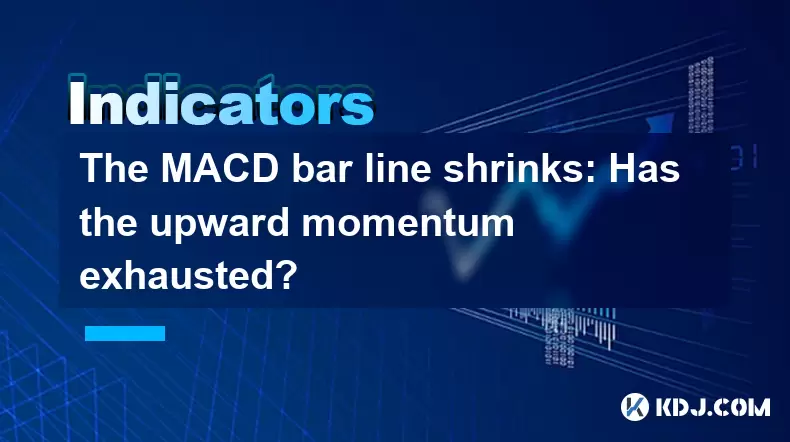
The MACD bar line shrinks: Has the upward momentum exhausted?
Jun 12,2025 at 12:49am
Understanding the MACD Bar LineThe Moving Average Convergence Divergence (MACD) is a widely used technical indicator in cryptocurrency trading. It consists of three main components: the MACD line, the signal line, and the MACD histogram (also known as the bar line). The MACD bar line represents the difference between the MACD line and the signal line. W...

The chip peak moves up: Is the main force quietly shipping?
Jun 12,2025 at 01:01am
Understanding the Chip Peak Movement in Cryptocurrency MiningIn recent years, the chip peak movement has become a critical topic within the cryptocurrency mining community. This phrase typically refers to the point at which mining hardware reaches its maximum efficiency and output capacity. When this peak shifts upward, it often signals changes in the s...
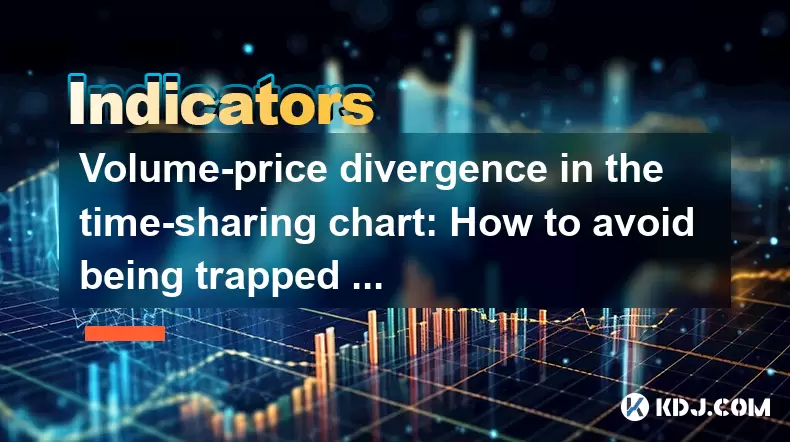
Volume-price divergence in the time-sharing chart: How to avoid being trapped on the same day?
Jun 12,2025 at 07:28pm
Understanding Volume-Price Divergence in Cryptocurrency TradingVolume-price divergence is a critical concept in technical analysis, especially within the fast-moving world of cryptocurrency trading. It refers to a situation where price movement and trading volume move in opposite directions. For instance, if the price of a cryptocurrency is rising while...

Two Yangs and one Yin on the quarterly line: Long-term bullish signal confirmed?
Jun 12,2025 at 07:00am
Understanding the 'Two Yangs and One Yin' Candlestick PatternIn technical analysis, candlestick patterns play a pivotal role in identifying potential market reversals or continuations. The 'Two Yangs and One Yin' pattern is one such formation that traders often observe on longer timeframes like the quarterly chart. This pattern consists of two bullish (...

KDJ low-level golden cross: How to avoid false signals?
Jun 12,2025 at 08:21am
Understanding the KDJ IndicatorThe KDJ indicator, also known as the stochastic oscillator, is a momentum-based technical analysis tool widely used in cryptocurrency trading. It consists of three lines: the %K line (fast stochastic), the %D line (slow stochastic), and the %J line (divergence value). These lines oscillate between 0 and 100, helping trader...

Bottom-up volume stagnation: Is it accumulation or heavy selling pressure?
Jun 12,2025 at 01:42pm
What Is Bottom-Up Volume Stagnation?Bottom-up volume stagnation refers to a specific pattern observed in cryptocurrency trading charts where the price of an asset moves sideways or slightly downward, and trading volume remains consistently low over an extended period. This phenomenon is often seen after a sharp price drop or during a prolonged bear mark...

The MACD bar line shrinks: Has the upward momentum exhausted?
Jun 12,2025 at 12:49am
Understanding the MACD Bar LineThe Moving Average Convergence Divergence (MACD) is a widely used technical indicator in cryptocurrency trading. It consists of three main components: the MACD line, the signal line, and the MACD histogram (also known as the bar line). The MACD bar line represents the difference between the MACD line and the signal line. W...

The chip peak moves up: Is the main force quietly shipping?
Jun 12,2025 at 01:01am
Understanding the Chip Peak Movement in Cryptocurrency MiningIn recent years, the chip peak movement has become a critical topic within the cryptocurrency mining community. This phrase typically refers to the point at which mining hardware reaches its maximum efficiency and output capacity. When this peak shifts upward, it often signals changes in the s...

Volume-price divergence in the time-sharing chart: How to avoid being trapped on the same day?
Jun 12,2025 at 07:28pm
Understanding Volume-Price Divergence in Cryptocurrency TradingVolume-price divergence is a critical concept in technical analysis, especially within the fast-moving world of cryptocurrency trading. It refers to a situation where price movement and trading volume move in opposite directions. For instance, if the price of a cryptocurrency is rising while...
See all articles

























































































